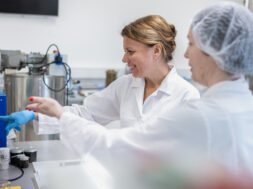It’s the Small Things: Trends in Automotive and Mobility
The business of moving people and things in the near future may depend on these six trends.

This edition of “It’s the Small Things” originally appeared in the May/June 2020 issue of Middle Market Growth. Find it in the MMG archive.
1. Spreading Mobility to Small Town America
Access to transportation is becoming challenging for the nearly 60 million Americans living in rural areas, especially as they age. An overreliance on driving and a lack of high-speed internet availability are limiting access to transportation services for rural adults over the age of 65—a population expected to increase by 77% in the coming decades. That challenge presents an opportunity for entrepreneurs and philanthropic organizations to serve this demographic. –CITRIS and the Banatao Institute
2. Happily Ever Aftermarket
Sales in the global automotive aftermarket are expected to reach $513 billion by 2027. Digitalization of automotive repair and component sales, along with advanced manufacturing technology, is expected to boost profits in the aftermarket. Increasing adoption of semi-autonomous, electric, and hybrid and autonomous vehicles is further expected to bolster aftermarket sales as more innovative products open up more opportunity for aftermarket manufacturers. –Grand View Research and Harris Williams
3. Teens Leaving the Driver’s Seat
About a quarter of 16-year-olds had a driver’s license in 2017, a sharp decline from 1983, when half of this age group had licenses. Teenagers are reaching driving age at a time when most have access to ride-hailing services such as Uber and Lyft. When they reach their 20s, more are moving to big cities with mass transit, where owning a car is neither necessary nor practical. –The Wall Street Journal
4. Keeping Mobility in the Hyperloop
A planned hyperloop between Chicago and Pittsburgh has put Ohio at the center of the experimental high-speed rail project being pursued by Elon Musk’s Hyperloop Transportation Technologies. According to a 2019 feasibility study, a hyperloop capsule would carry around 30 passengers at speeds of up to 700 mph, completing a route between Chicago and Pittsburgh–with stops in Cleveland and other cities–in around an hour. The project must now undergo an environmental impact study, but it has received support from state and federal authorities. –Northeast Ohio Areawide Coordinating Agency
5. Governments and Rideshares Team Up
Some ride-sharing companies are being subsidized by governments to get people from outlying areas to public transportation hubs. Transit authorities are creating dedicated offices devoted to advancing automated technologies, and autonomous vehicle shuttle companies are already operating services in some city centers, replacing select public bus lines or extending services into new or outlying areas. –World Economic Forum
6. Mapping the Driverless Future
Existing mapping technology is useful for navigating an unfamiliar city, but that won’t cut it for machines. It could take ultra-precise location technology to unlock widespread adoption of autonomous vehicles. Scape, a London-based startup, expects it can do just that. The company’s algorithm uses street signs, storefronts and lampposts in its database of images from cities around the world to anchor a user’s location to the centimeter. Scape wants to use this technology to lay the information infrastructure for driverless vehicles, drone delivery and augmented reality. –MIT Technology Review


